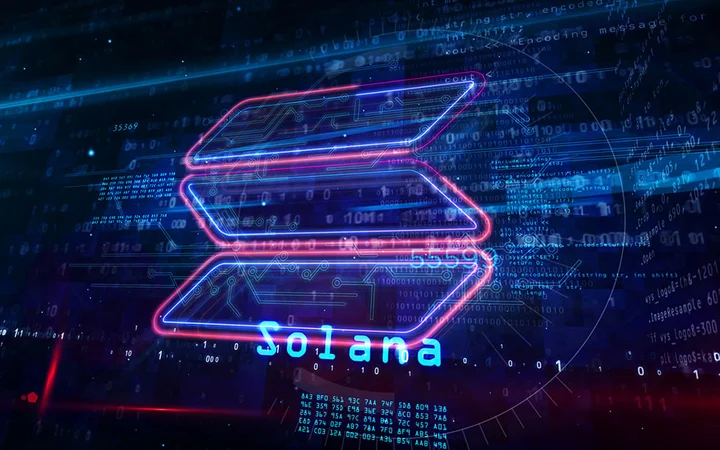Return to deflation Ethereum poised for action?
Is Ethereum Ready to Combat Deflation and Initiate Action?In recent weeks, as more and more Ethereum validators voluntarily exit, the growth in the number of Ethereum validators has started to slow down, which in turn has lowered the mining speed of Ethereum. With the increasing activity in the Ethereum network, the amount of Ethereum burned through the EIP-1559 protocol has also skyrocketed, causing Ethereum’s supply to once again contract.
Summary
-
The trend of Ethereum staking is becoming increasingly significant. Since October, the number of validators exiting has been steadily increasing, which is closely linked to the bullish trend in the digital asset market.
-
The increase in the number of validator exits has led to a decrease in the daily mining volume of Ethereum, and this change is closely related to the active amount of Ethereum in the staking pool.
-
Meanwhile, as people pay close attention to various digital assets and stablecoins, it is not surprising to see an increase in activity on the current Ethereum network. This is reflected in the fact that the increase in Gas fees burned through EIP-1559 has caused a contraction in ETH supply.
Undoubtedly, the most important headline news in the past week was the resignation of Binance CEO CZ. In the previous lawsuit, Binance reached a final settlement amount of $4.3 billion with the authorities, and many considered this crucial event as a sign of the end of the wild growth era in the digital asset industry.
Following this announcement, the price of BNB dropped by 9.1%. However, compared to previous price drops, this market reaction was relatively moderate—earlier this year, when the SEC announced that they would charge Binance, BNB experienced a decline of up to 24%.

Figure 1: BNB price trend
After this news was released, the withdrawal activity of Binance’s main assets increased. The total balance of a series of DeFi “blue chips” decreased by 6.7% in the previous 24 hours, while the balances of Bitcoin, Ethereum, and stablecoins decreased by 4.4%, 4.9%, and 2.2% respectively.
However, in the six days after CZ’s resignation, there were signs of a recovery in Binance’s balance—outflows of all four categories of digital assets slowed down and even returned to net inflows. In many ways, this indicates the level of trust users have in the Binance platform. Some also believe that considering Binance’s potential settlement with U.S. regulatory agencies over the next three years, user confidence in the trading platform may even be bolstered.

Figure 2: Recent changes in Binance’s mainstream asset balances
Validator Exits
Although it did not make headlines like Binance, the Ethereum staking pool has been experiencing noticeable changes since October of this year. Now, more and more validators are exiting the staking pool.
With the formal launch of the “pledge withdrawal” mechanism in Shanghai’s upgrade, the number of users who have exited the pledge and realized their returns has increased significantly. At the same time, the providers and their equipment for pledge have also undergone increasingly intense reshuffling. During this period, an average of 319 validators exit the pledge every day.
Since early October, we can see that this exiting behavior continues to increase, reaching a peak of an average of 1,018 validators exiting per day. This upward trend is consistent with the recent rise in spot prices of digital assets.

Figure 3: Ethereum validator traffic
As a result, the growth rate of the total effective pledge balance of Ethereum, which represents active participation in proof-of-stake consensus, has slowed down. Currently, this indicator is experiencing its first decline since the Shanghai upgrade.
The growth gradient of the total effective balance in the pledge pool began to level off in mid-October, with an average daily growth rate of 0.1% to 1%, more than half of the growth rate since May.

Figure 5: Changes in the net percentage of Ethereum’s total effective balance
We carefully considered the situation of these exiting validators and finally found that most of them have “voluntarily exited” in the past eight weeks. “Voluntarily exiting” refers to validators choosing to exit the pledge on their own, which is different from being “removed” from the pledge pool – the latter is a punishment for validators who violate protocol rules.
In the same period, there have only been two “removal” events in the Ethereum network, one of which was larger in scale. The event involved 100 new validators who were penalized for signing on two different blocks at the same time.

Figure 6: Comparison of voluntary exiting events and “removal” events in the Ethereum network
These exiting validators can be further classified based on the type of pledge providers they belong to. This classification reveals some interesting phenomena:
-
Since October, centralized exchanges (CEX) have been the main battlefield for pledge withdrawal, with Kraken and Coinbase having the largest outflow of funds.
-
The withdrawn pledge has also seen a slight increase, with Lido remaining the largest participant in this field.
There are several factors that may drive the behavior of these investors:
-
Investors may choose to change their pledge configuration under the pressure of continued regulation, such as transferring their pledged Ethereum from CEX to pledge providers with higher liquidity.
-
Due to the higher returns of safer assets, such as US government bonds, compared to current Ethereum pledge, investors who are able to enter the US capital market may prefer to invest their funds in the former rather than the latter.
-
Investors may also seek greater liquidity for the Ethereum they hold in response to the upcoming market upward trend, rather than continuing to hold these less liquid Ethereum.
We noticed that in the CEXs (Centralized Exchanges) where staking withdrawals occur, Kraken and Coinbase hold a dominant position, while the highest withdrawal rates come from Lido, the highest liquidity staking provider. However, it should be pointed out that entities like Lido are also major recipients of Ethereum staking, indicating their strong investor stickiness and their superior position in the market.

Figure 7: Ethereum Staking: Inflows and Outflows
Based on net changes, Lido’s dominant position is becoming more stable, with a total increase in staked balance of 468,000 ETH. Among the CEXs, Coinbase and Binance still have increasing staked balances, while Kraken’s balance decreases by 19,400 ETH. Among the staking providers, HTX and Staked.us experience the most significant decrease in staked balance, both decreasing by over 44,000 ETH.

Figure 8: Ethereum Staking: Net Flow
Consistent with the observed decrease in effective balances, Ethereum mining volume has also decreased. This is because the daily amount of Ethereum mined depends on the number of active validators or the total effective balance within the staking pool.
With the growth rate of validators slowing down or even declining, the daily mining volume of Ethereum also decreases. In the past 7 days, the growth rate of Ethereum mining has decreased by 0.5% each day. It’s worth noting that this is the first time in recent history that the growth rate has declined.

Figure 9: Daily Mining Volume of Ethereum since the merge
With the decrease in Ethereum’s mining rate, we can now shift our attention to another aspect that can be considered as complementary research – burn rate. Starting with the London hard fork in 2021, the fee-burning mechanism enabled by the EIP-1559 protocol concerns the transaction fees of Ethereum, which provides theoretical basis for Ethereum’s supply shrinking as network usage increases.
Considering the recent increase in gas fees, which indicates a continuous growth in transaction demand on the Ethereum network, it’s evident that the daily fee consumption also increases. Throughout October, the daily fee burned on the network reached 899 ETH. In the past month, a total of 5,368 ETH has been burned as fees in transactions across the network.

Figure 10: Ethereum: Gas fees and burn rate
In addition, we can also evaluate a detailed account of Gas usage for various types of transactions. These metrics allow us to identify the behaviors that primarily contribute to supply consumption.
By studying the two areas that have had the greatest impact on the Ethereum network in terms of applications – NFTs and DeFi – we can clearly see that the transactional activity in these two areas has decreased over the past four months, by 3% and 57% respectively. Our conclusion is that the binding strength between these two areas and the Ethereum network is weakening, and their contribution to the recent surge in on-chain activities is minimal.

Figure 11: Ethereum – Gas fees in NFT and DeFi transactions
The recent surge in Ethereum network activity can be primarily attributed to the trading of digital assets and stablecoins. Over the past three months, the gas volume for these digital assets has increased by 8.2%, while the gas volume for stablecoins has increased by 19%. This indicates that as confidence in the market grows, capital may shift towards long-tail assets.

Figure 12: Ethereum – Gas fees in other digital asset transactions and stablecoin transactions
Since the London hard fork, Ethereum has transitioned from net inflation to a balanced state and eventually entered a deflationary phase. It is worth noting that due to the decrease in Ethereum network activity, it experienced a brief period of net inflation from August to October.
In recent weeks, due to a decrease in issuance rate and an increase in supply, Ethereum’s total supply has once again experienced net deflation.

Figure 13: Ethereum – Total market supply after the merge
Conclusion
In recent weeks, as the number of validators exiting the staking pool has started to increase, there have been significant changes in Ethereum’s staking dynamics. This has resulted in a slowdown in the mining rate of current Ethereum and a decrease in staked balances for the first time since the Shanghai upgrade.
In addition, the recent surge in Ethereum network activity, particularly driven by the transfer of other digital assets and stablecoin transactions, has increased transactional demand. This, in turn, has put upward pressure on gas prices, leading to an increase in daily Ethereum fees burned through the EIP-1559 protocol.
In this context, we can clearly see that the network situation and market supply of Ethereum are influenced by external factors such as the trading of other digital assets and the activity in areas heavily reliant on the Ethereum network, such as DeFi and NFTs. Therefore, Ethereum’s deflation is actually a natural result of the combination of these various factors.
We will continue to update Blocking; if you have any questions or suggestions, please contact us!
Was this article helpful?
93 out of 132 found this helpful
Related articles
- RWA Tokenization Beyond Speculation
- LianGuaintera Capital Partner How DePIN is Introducing Decentralized Hardware to the New Data Economy
- The Crypto Catastrophe: A Billion-Dollar Loss Party
- Investors Flock to MUNGER Coin, Soaring 31,000% Following Charlie Munger’s Passing – But the Ride is Short-lived!
- OpenAI CEO Sam Altman Returns to Office: A Roller Coaster of Whirlwind
- IOTA Price: To Buy or Not to Buy After $100M Foundation Launch in Abu Dhabi?
- Grove Raises $7.9M to Plant Seeds of Decentralization in Digital Infrastructure




